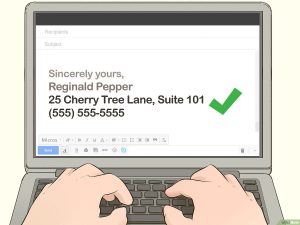How to End an Email Professionally
End an Email Professionally
When it comes to writing emails in business, the right tone and proper etiquette are crucial to effective communication. It’s also important to consider how you’ll close your emails, which can have a big impact on whether or not the recipient will respond to you. It can be difficult to find the right email closing lines and sign-offs, but if you know how to do it correctly, your emails will always leave the right impression.
Email closings are phrases or short sentences that you include at the how to end an email, usually before your signature. They can express gratitude, send well wishes, or just say goodbye, and they’re a great way to wrap up your message. They’re also a great opportunity to set the right tone, as they can help convey your personality and show that you take the time to write each email you send.
Finding the perfect email signature can be just as hard as finding the right opening line, so it’s important to put some thought into how you want your email to end. A good email signature should include a title, a contact email address (preferably your work email), and your name. You should use your full name, especially if you’re using a formal title like Mr. or Mrs., and always include your phone number if you have one. You may also choose to add a link to your website, blog, or social media pages if you have them.

How to End an Email Professionally
While it’s fine to be a little more casual in personal emails, it’s best to stay professional when sending any type of business email. If you’re looking for a job or trying to connect with a potential employer, it’s even more important that your emails are polite and professional. If you’re not careful, you could lose out on an opportunity or damage a relationship.
Ending an email effectively is crucial for leaving a lasting impression and ensuring clear communication. The conclusion of an email should reflect the tone and purpose of the message while conveying professionalism and courtesy. One common approach is to use a courteous closing phrase such as “Sincerely,” “Best regards,” or “Kind regards,” followed by your name. These phrases provide a polite transition to the end of the email and indicate respect for the recipient. However, the choice of closing phrase can vary depending on the relationship with the recipient and the formality of the communication.
In addition to your email signature, you should also have a professional email closing line and sign-off for each of the emails you send. A good email ending should be short and sweet, but it should also convey your professionalism and leave the reader with a positive impression. It should also be suited to the tone of the email, as an overly friendly sign-off might make it seem insincere.